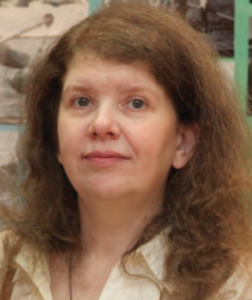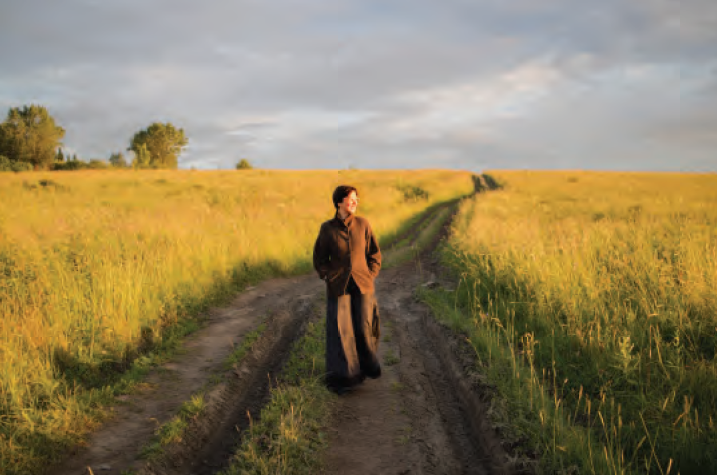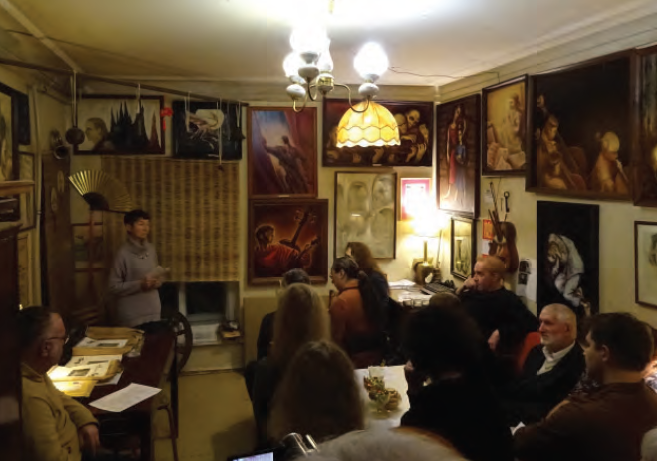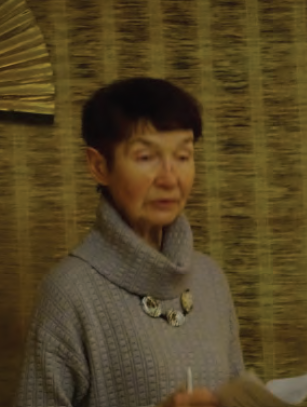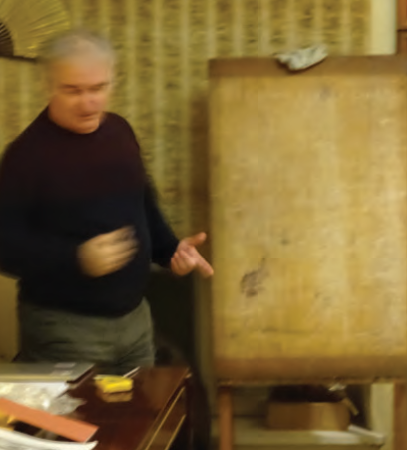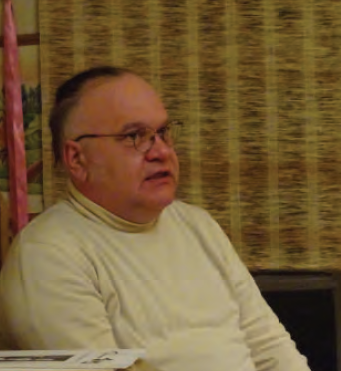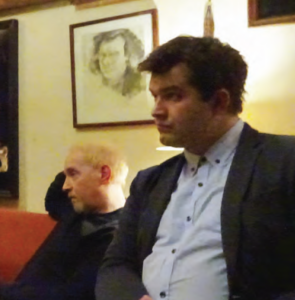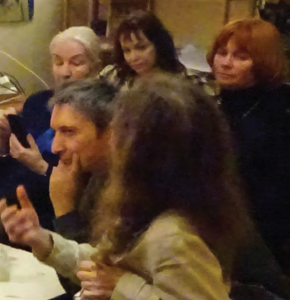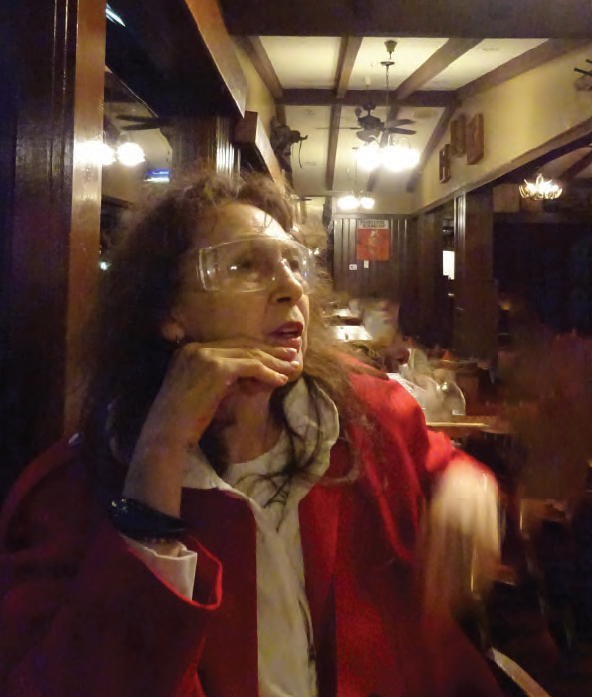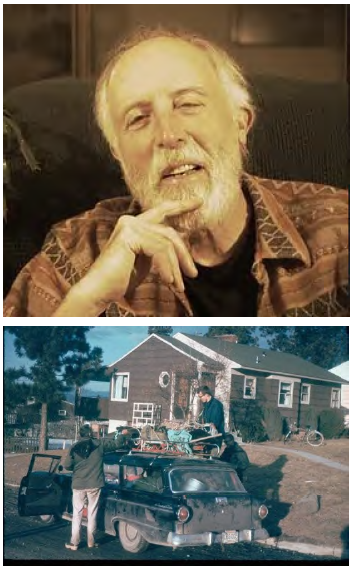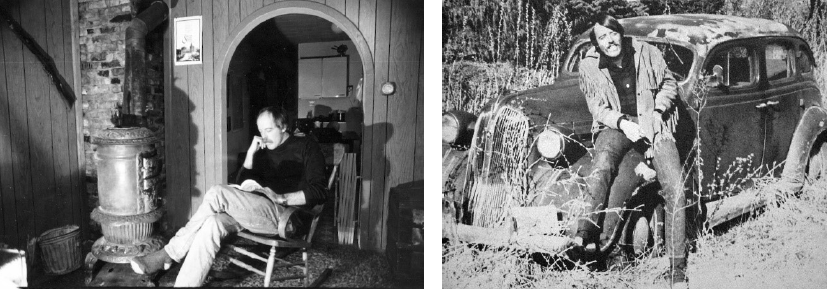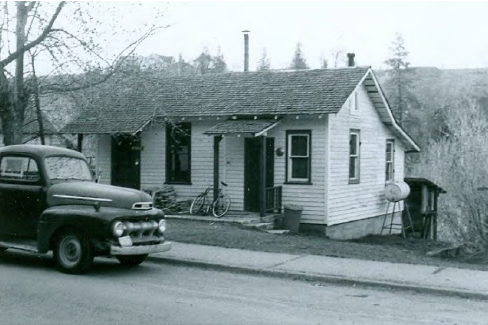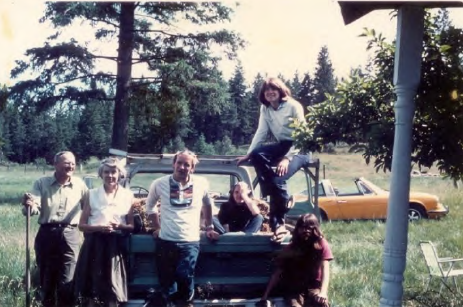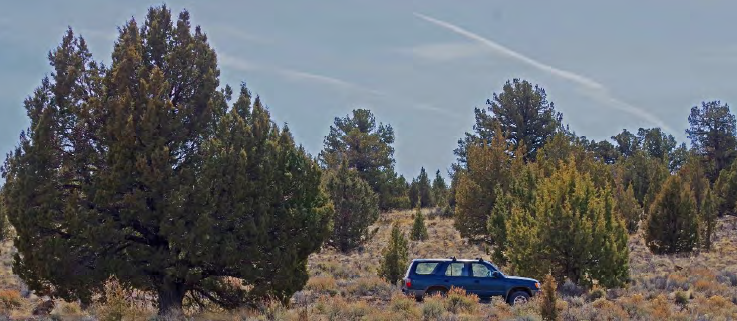About the Author: Violetta Stigovna Trofimova, PhD in Philology, is a writer. She defended her dissertation on the prose of Aphra Behn at Saint Petersburg State University in 2002 and is the author of two scholarly monographs—”The Prose Legacy of Aphra Behn” (2006) and “The Women’s Republic of Learning in the 17th Century” (2012)—as well as several dozen research articles in Russian, English, and French. She has also published three novels and a collection of short stories.
The once-celebrated novel by Anglo-Irish writer Charles Maturin (1780–1824), Melmoth the Wanderer (1820), is experiencing a renaissance in Russia. In recent years, several translations of the novel into Russian have been published, with annotations describing it as acclaimed masterpiece of world literature. However, these are essentially reissues of A. Shadrin’s translation, first printed in the series “Literary Monuments” (Litpamyatniki) in 1976. That edition included an extensive critical article by Academician M.P. Alexeev, which shaped the understanding of this novel in the USSR and Russia. This article is also included in Melmoth’s latest editions. The critical literature on Melmoth in Russian is not particularly extensive, and there is a lack of the kind of basic supplementary material one would expect for a work admired by A.S. Pushkin, Honore de Balzac, and Oscar Wilde—such as the origin of the novel’s title and the prototypes of its characters. From 1978 to 2005, three dissertations dedicated to Maturin and Melmoth the Wanderer were produced in Moscow, Nizhny Novgorod, and Voronezh—by L.V. Spitsyna in 1978, L.S. Makarova in 2001, and A.V. Varushkina in 2005, respectively [4; 2; 1]. The authors debate the genre classification of Maturin’s novel and raise questions of intertextuality and composition, but they minimally address Melmoth the Wanderer as a historical novel and, judging by the content of the abstracts, fail to create the apparatus I just mentioned. I’m sorry to say that the commentary in the academic edition is incomplete and contains typographical errors and mistakes in dates.
Melmoth the Wanderer features several temporal layers. It begins in 1816 but shifts between 1667, 1677, and 1683. Although most of the novel’s action takes place in Spain, the English episodes pertain to the Restoration period in England (1660–1689). There are two such episodes: Stanton’s notes near the beginning of the novel and “The Lovers’ Tale” closer to the end. I currently have no answer as to how these episodes are connected. I will focus on the first episode. Regarding the second, I can only say that it is arguably the most artistically compelling novella in the entire novel Melmoth the Wanderer. It presents a traditional historical narrative about the Mortimer family in the spirit of Walter Scott’s novels, featuring coherent, sequential storytelling and well-developed characters. A central theme in this part of the novel is nobility. The embodiment of nobility in this section is Mrs. Anna Mortimer. The most striking characters in this narrative are the women—Mrs. Ann, Margaret, and Elinor. Elinor is one of the few in the novel who manages to emerge victorious against the cruel and unjust world around her and to resist the temptations of the main character, Melmoth the Wanderer.
In addressing the Restoration period, Maturin begins with an unexpected aspect—occultism, belief in witches and witchcraft, and astrology: “It must be remembered, that at this period, and even to a later, the belief in astrology and witchcraft was very general. Even so late as the reign of Charles II Dryden calculated the nativity of his son Charles, the ridiculous books of Glanville were in general circulation, and Delrio and Wierus were so popular, that even a dramatic writer (Shadwell) quoted copiously from them, in the notes subjoined to his curious comedy of the Lancashire witches” [3, p. 23]. Such a perspective is not often associated with the period. Maturin was attracted by the Restoration’s excesses and unprecedented freedoms, and by their flip side—unprecedented licentiousness: “There was…something splendid, ostentatious, and obtrusive, in the vices of Charles the Second’s reign” [3, p. 34]. The author provides a detailed account of the everyday aspects of theatrical life at that time—from the types of audiences and attitudes toward actresses and actors to the timing of performances: “Plays being then performed at four o’clock, allowed ample time for the evening drive, and the midnight assignation, when the parties met by torch-light, masked, in St. James’s Park” [3, p. 34]. The mysterious Stanton, obsessed with the equally mysterious Melmoth the Wanderer, immerses himself in the whirlwind of London theatrical performances. Stanton’s “Notes”— romantically fragmented, incomplete, and illegible—present two spaces of Restoration-era London: the space of the theater and the space of the madhouse.
Maturin demonstrates an unexpectedly profound knowledge of the English theater of the late 17th century for his time—the late 1810s. He mentions numerous playwrights: William Wycherley with his play “Love in a Wood, or St. James’s Park” (1671), John Dryden with his comedy “The Marriage à la Mode” (1673) and heroic drama “The Conquest of Granada by the Spaniards” (1670), Thomas Shadwell with his play “The Lancashire Witches” (1681), Aphra Behn with her comedy “The Roundheads” (1681), as well as Thomas Otway, Robert Howard, Elkanah Settle, Charles Sedley, and John Wilmot, Earl of Rochester. Among the playwrights of the last decade of the 17th century, Maturin mentions William Congreve with his first comedy “The Old Bachelor” (1693) and Thomas Southern with his tragicomedy “Oroonoko” (1695), based on Aphra Behn’s novel of the same name. However, the central figure throughout the “theatrical” episode in Melmoth the Wanderer is the personality and dramatic work of the greatest Restoration tragic playwright, Nathaniel Lee (1651?–1692).
Nathaniel Lee was Maturin’s favorite playwright among all authors of the Restoration period. He was arguably the only author of the late 17th century whose plays remained on the stages of English theaters even 150 years later. Byron noted the similarity between Maturin’s own play “Manuel” and the works of Nathaniel Lee [5].
Maturin provides a detailed description of the performance of the tragedy “The Rival Queens, or The Death of Alexander the Great,” which he refers to as a premiere. The play’s first performance took place in 1677: “Stanton gazed on all this with the look of one who ‘could not be moved to smile at any thing.’ He turned to the stage, the play was ‘Alexander,’ then acted as written by Lee, and the principal character was performed by Hart, whose godlike ardour in making love, is said almost to have compelled the audience to believe that they beheld the ‘son of Ammon’.” [3, p. 36]. Maturin then draws attention to the play’s absurdities present: “There were absurdities enough to offend a classical, or even a rational spectator. There were Grecian heroes with roses in their shoes, feathers in their hats, and wigs down to their waists; and Persian prin Persian princesses in stiff stays and powdered hair” [3, p. 36]. He then almost verbatim recounts Thomas Betterton’s story about one of the productions of “The Rival Queens”: “It was that memorable night, when, according to the history of the veteran Betterton, Mrs Barry, who personated Roxana, had a green-room squabble with Mrs Bowtell, the representative of Statira, about a veil, which the partiality of the property-man adjudged to the latter. Roxana suppressed her rage till the fifth act, when, stabbing Statira, she aimed the blow with such force as to pierce through her stays, and inflict a severe though not dangerous wound. Mrs Bowtell fainted, the performance was suspended, and, in the commotion which this incident caused in the house, many of the audience rose, and Stanton among them” [3, p. 36]. The story concludes with the appearance of the main character—the mysterious Melmoth the Wanderer: “It was at this moment that, in a seat opposite him, he [Stanton—V.T.] discovered the object of his search for four years—a man he had once encountered on the plains of Valencia, who, in his opinion, was the main protagonist of the extraordinary stories he had been told” [3, p. 36].
The most intriguing part of the novel’s backstory begins in connection with the play “The Rival Queens.” This play contains scenes of madness that captivated Maturin. It was performed, among other places, in Dublin in 1685 (in Melmoth the Wanderer, the theme of Ireland is openly expressed—in the origins of the main character and his descendant, in the depiction of life and customs in early 19th-century Ireland, as well as in the author’s comments, and there are many hidden and obscure allusions that are not immediately apparent upon first reading). In the 18th century, this play featured the actress Charlotte Melmoth (c. 1749–1823), who, along with her common-law husband, a priest turned actor, Samuel Jackson Pratt, opened a theater in Drogheda, Ireland, in 1773, and debuted that same year at the Smock Alley Theatre in Dublin. She appeared as Roxana the following year, in 1774, at Covent Garden Theatre in London. Later, Charlotte Melmoth emigrated to America and became a leading tragic actress in New York at the turn of the 18th and 19th centuries. Her common-law husband adopted the stage name “Courtney Melmoth.” He was a prolific and well-known poet and novelist during his time. The story of Charlotte Melmoth and Courtney Melmoth may have somehow influenced Maturin’s choice of surname for the hero of his novel.
Returning to Nathaniel Lee: he was born around 1651 to a Presbyterian minister, Dr. Richard Lee, chaplain to one of the “architects” of the Stuart Restoration, George Monk. He received an excellent education first at the prestigious Charterhouse School in London and then at Trinity College, Cambridge, where he earned his Bachelor of Arts degree in 1669. His first play, “Nero” (1674), staged at the Royal Theatre, Drury Lane, in 1675, was not very successful. It was followed by two more tragedies based on historical subjects—“Sophonisba” (1675) and “Gloriana” (1676)—but true success came with the performance of “The Rival Queens” on March 17, 1677, at the Royal Theatre, Drury Lane, which I mentioned earlier. This was followed by “Mithridates” (1678), “Caesar Borgia” (1680), and “Theodosius” (1680), the tragicomedy (or “black” comedy) “The Princess of Cleves” (1681), and finally, a play often regarded as the best of his work—the tragedy “Lucius Junius Brutus” (1680), which was soon banned due to allusions to King Charles II and the promotion of republican ideas. Consequently, in 1683, Nathaniel Lee released the tragedy “Constantine the Great,” which served as an apology for the Tories.
In 1684, Nathaniel Lee experienced what both frightened and attracted Romantic writers (recall Pushkin’s “God forbid I go mad”)—he was committed to Bedlam, a mental asylum. Here is what Maturin writes about Stanton—what situation he found himself in “a few years later”: “He had been always reckoned of a singular turn of mind, and the belief of this, aggravated by his constant talk of Melmoth, his wild pursuit of him, his strange behaviour at the theatre, and his dwelling on the various particulars of their extraordinary meetings, with all the intensity of the deepest conviction, (while he never could impress them on any one’s conviction but his own), suggested to some prudent people the idea that he was deranged” [3, p. 38]. The prophecy of Melmoth the Wanderer was fulfilled: “the place shall be the bare walls of a madhouse, where you shall rise rattling in your chains, and rustling from your straw, to greet me,—yet still you shall have the curse of sanity, and of memory” [3, p. 37]. “An anecdote about Nathaniel Lee’s attitude toward his stay in Bedlam has survived: “They called me mad, and I called them mad, and damn them, they outvoted me” [6, p. 1]. There were rumors that in Bedlam, Nathaniel Lee wrote a twenty-five-act play. Unfortunately, no traces of this work have survived. After his release from the asylum in 1688, Nathaniel Lee published a poem on the death of Aphra Behn and also released the tragedy “The Massacre in Paris,” which was considered highly anti-Catholic. Maturin faced similar accusations of anti-Catholicism over his novel Melmoth the Wanderer. Nathaniel Lee died from alcoholism in 1692 in London.
From all of the above, it can be concluded that both the biography and the creative method of the Restoration playwright Nathaniel Lee were at least one point of reference for Charles Maturin’s novel Melmoth the Wanderer. Lee’s attention to liminal states and the mad (in the literal sense) passions that consumed his characters attracted the Romantic novelist Charles Maturin. The mysterious story of Nathaniel Lee’s confinement in Bedlam and his equally strange release four years later all contributed to the narrative of Stanton, who similarly manages to escape from the madhouse, then visit Ireland and apparently Spain, where he presumably has his final encounter with the main character—Melmoth the Wanderer.
References
- Varushkina A.V. The Image of the World and Methods of Its Creation in C.R. Maturin’s Novel “Melmoth the Wanderer” (Obraz mira i sposoby ego sozdaniya v romane Ch.R. Met’yurina «Mel’mot Skitalets»): Abstract of PhD dissertation. Voronezh: [Voronezh State University], 2005. 20 p.
- Makarova L.S. Charles R. Maturin’s Novel “Melmoth the Wanderer” in the Context of Gothic and Romantic Traditions (Roman Ch.R. Met’yurina «Mel’mot-Skitalets» v kontekste goticheskoy i romanticheskoy traditsiy): Abstract of PhD dissertation. Nizhny Novgorod: [Nizhny Novgorod State Pedagogical University], 2001. 20 p.
- Maturin C.R. Melmoth the Wanderer. Moscow: Azbuka-Atticus, 2021. 584 p.
- Spitsyna L.V. Charles Robert Maturin and His Philosophical Novel “Melmoth the Wanderer” (Char’lz Robert Met’yurin i ego filosofskiy roman «Mel’mot Skitalets»): Abstract of PhD dissertation. Moscow: Moscow Regional Pedagogical Institute named after N.K. Krupskaya, 1978. 21 p.
- Letters and Journals of Lord Byron. Lord Byron to John Murray, 14 June 1817 // https://www.lordbyron.org/monograph.php?doc=ThMoore.1830&select=AD1817.26 [accessed 27 August 2024]
- Porter R. The Faber Book of Madness. London: Faber & Faber, 1991. 572 p.

